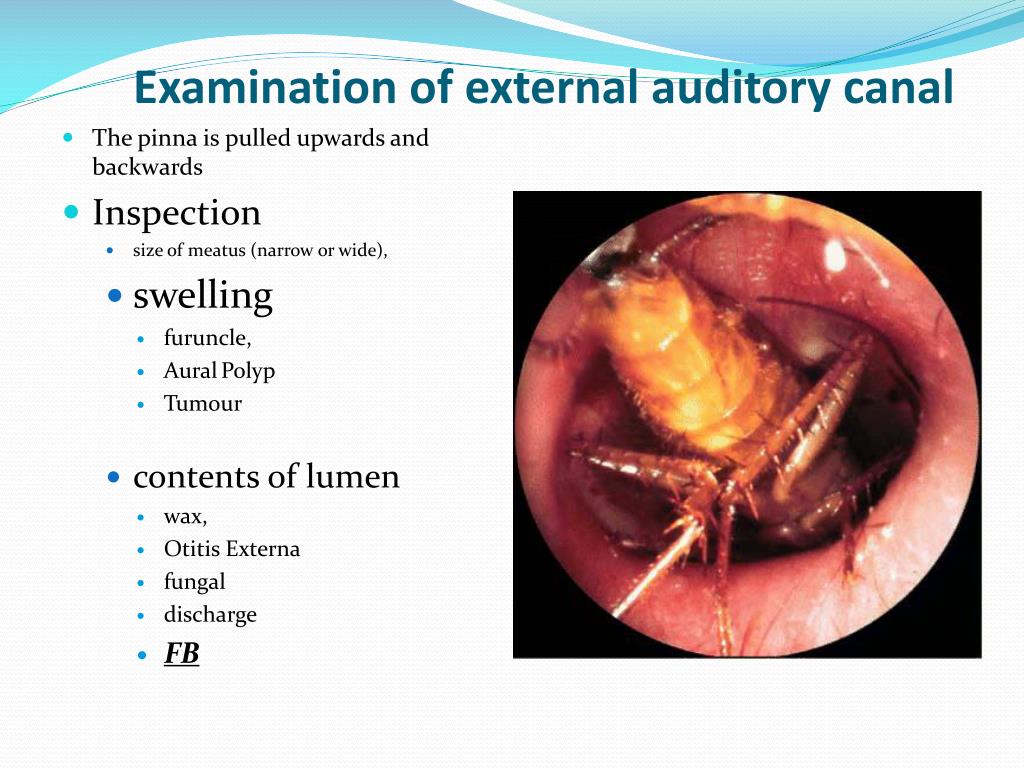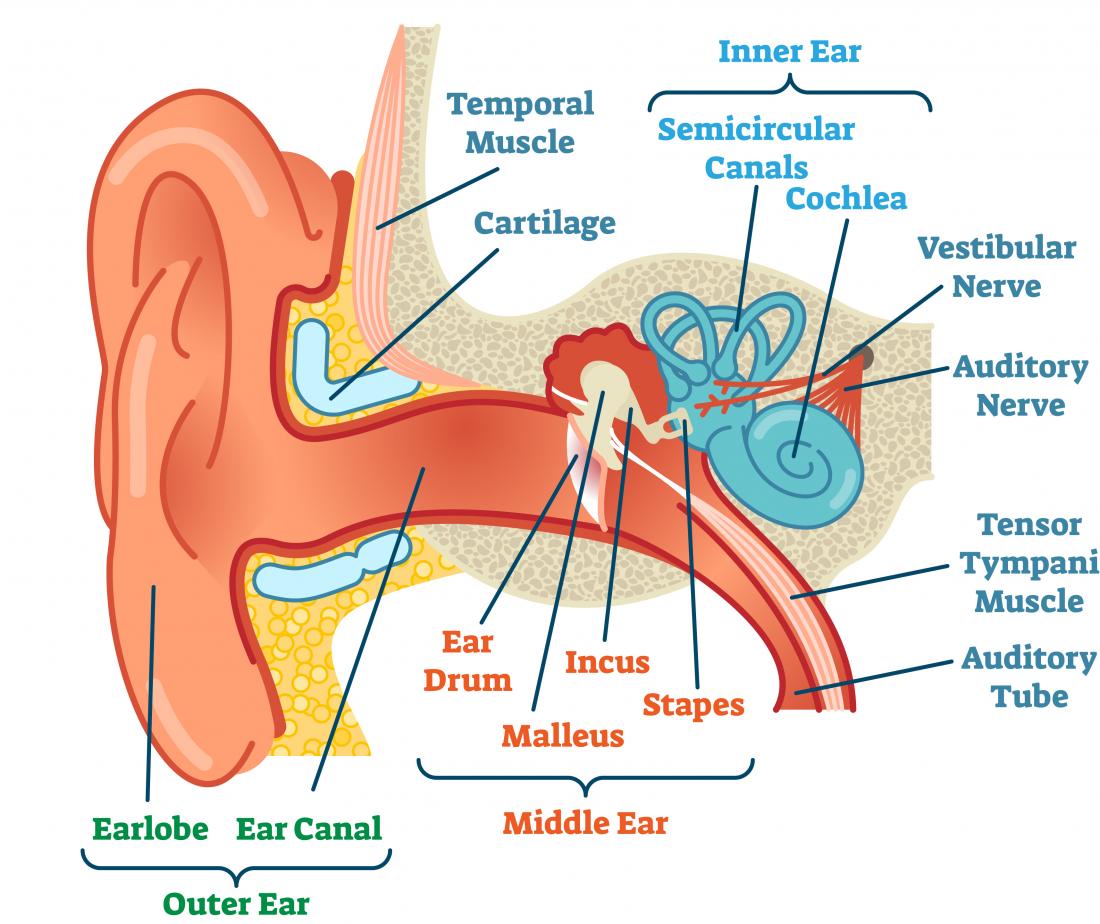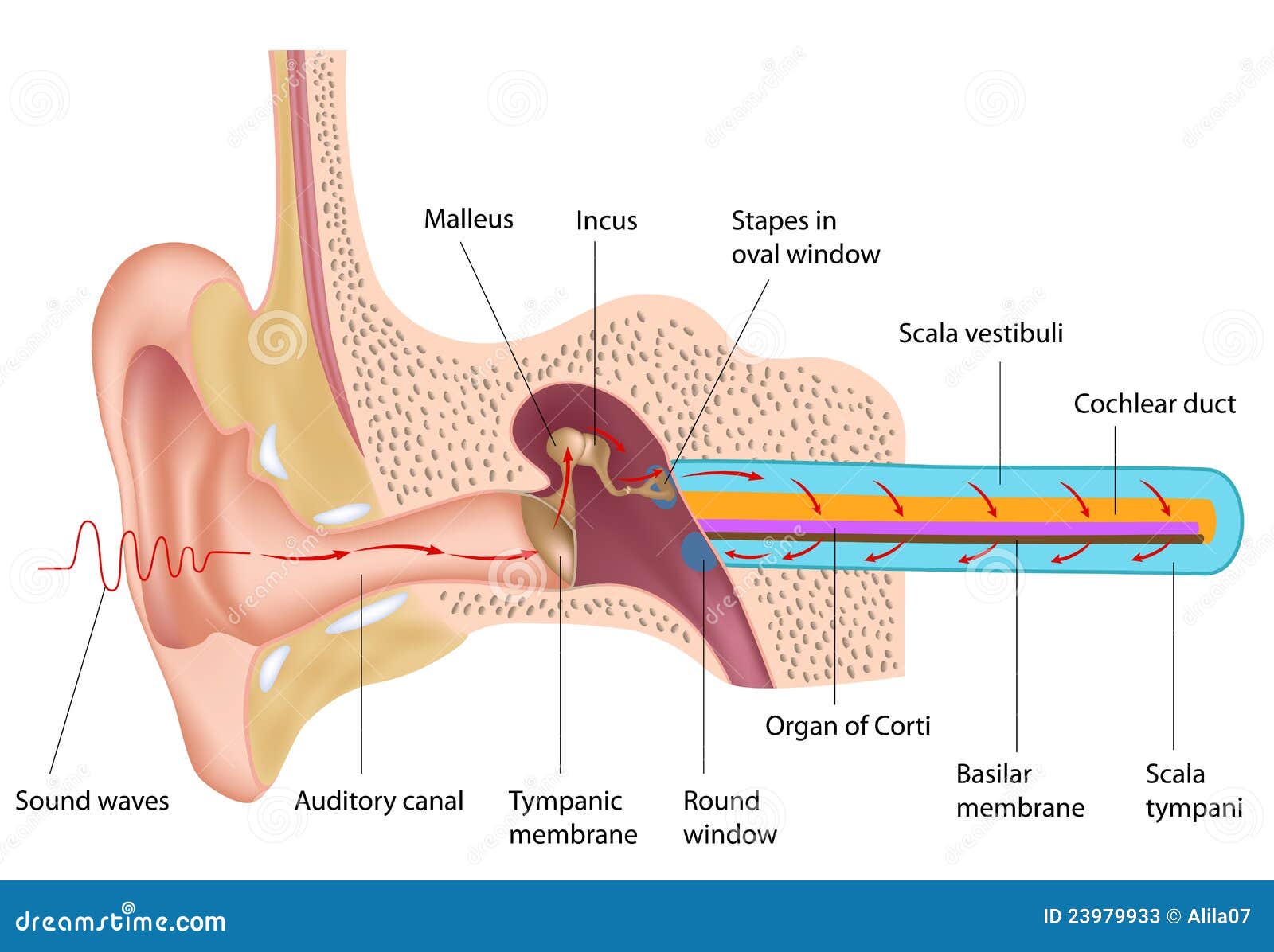
The footplate of the stapes fits into the oval window. Oval window: oval-shaped opening from the middle ear into the inner ear.Otoliths: calcium carbonate crystals found in the utricle and saccule of the inner ear anatomy.Ossicles (incus, malleus, stapes): tiny bones of the middle ear that conduct sound from the tympanic membrane to the oval window of the inner ear.Nystagmus: involuntary, alternating, rapid and slow movements of the eyeballs.Mixed hearing loss: hearing loss produced by abnormalities in both the conductive and sensorineural mechanisms of hearing.middle ear: air-filled cavity containing the ossicles and tympanic membrane, the function of which is to transfer sound energy from the outer ear to the cochlea of the inner ear. Labyrinthitis: an inflammation of the labyrinth.Labyrinth: complex system of chambers and passageways of the inner ear anatomy includes both the hearing and balance portions of the inner ear.Eustachian tube: connects the middle ear space with the throat maintains equal air pressure on both sides of the tympanic membrane (eardrum).


Cochlear implant: a prosthetic device that, unlike hearing aids which amplify sound, bypass the outer, middle, and inner ear and directly stimulate auditory nerve fibers.

Cochlea: portion of the inner ear anatomy concerned with hearing.Central vestibular system: parts of the central nervous system (brain and brainstem) that process information from the peripheral vestibular system about balance and spatial orientation.Canalithiasis: the theory of BPPV (Benign Paroxysmal Positional Vertigo), where free-floating debris can migrate into a semicircular canal and cause short episodes of vertigo when it moves within the canal.Auditory: related to the sense of hearing.In response to the nerve impulses from the peripheral vestibular system, the brain sends commands to the eyes-enabling clear vision during movement and to the muscles of the body-so that balance is maintained during position changes and movement. That is, the impulses coming from the right side conform to (agree with) the impulses coming from the left side. When the vestibular apparatus on both sides of the head are functioning properly, they send symmetrical impulses to the brain. The receptor then sends impulses to the brain about movement. When this fluid lags behind, the sensory receptor within the canal is bent. With head movement in the plane or angle in which a canal is positioned, the endolymphatic fluid within that canal, because of inertia, lags behind.

At the base of each canal is a swelling (ampulla) and within each ampulla is a sensory receptor (cupula). They are located at right angles to each other and to those in the ear on the opposite side of the head. The mechanism that regulates the amount and composition of these fluids is important to the proper functioning of the inner ear.Įach of the semicircular canals is located in a different spatial plane. Both of these fluids are of precise chemical compositions, and they are different. Around the outside of the tubes and sacs is a different fluid called perilymph. Within these passageways are tubes (semicircular canals), and sacs (a utricle and saccule), filled with a fluid called endolymph.
Auditory canal function series#
The vestibular system in each ear consists of a complex series of passageways and chambers within the bony skull. The peripheral vestibular system sends information to the brain and brainstem. Peripheral in this context refers to a system that is outside of the central nervous system (brain and brainstem). The human inner ear anatomy contains two divisions: the hearing (auditory) component-the cochlea, and a balance (vestibular) component-the peripheral vestibular system.


 0 kommentar(er)
0 kommentar(er)
